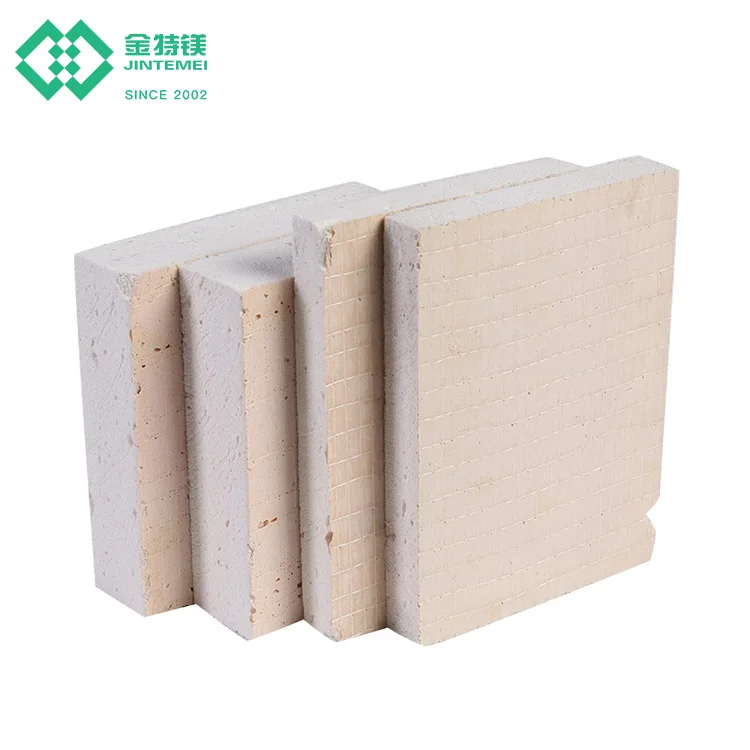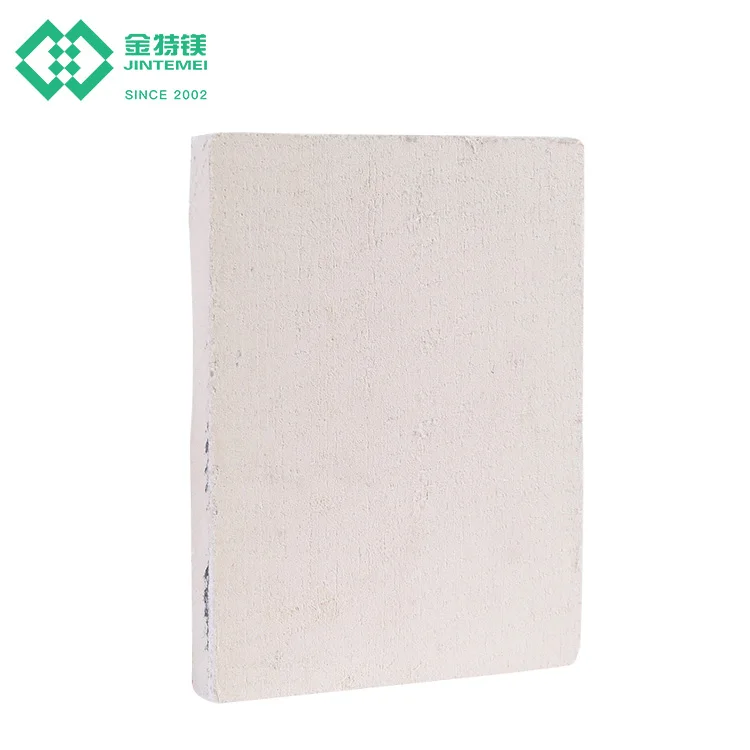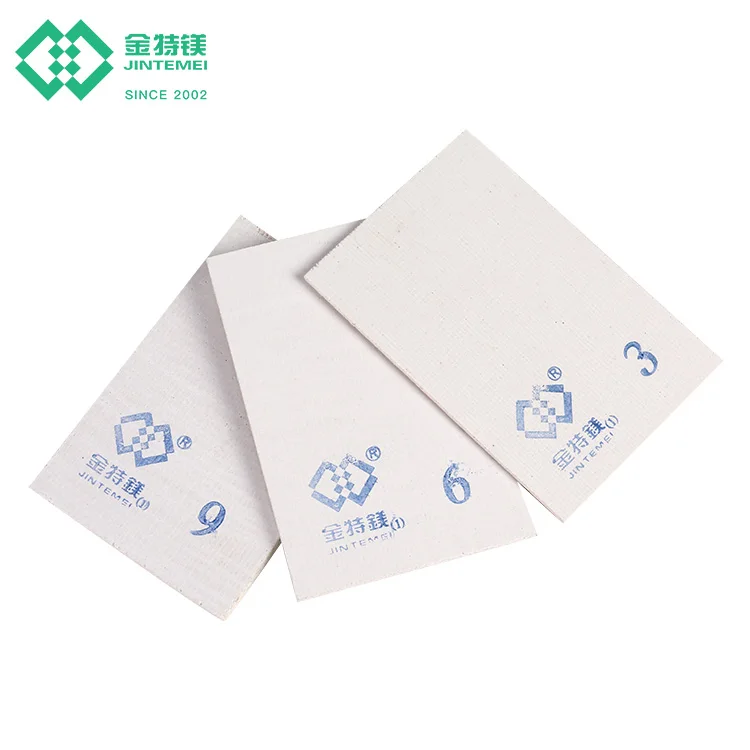Lightweight Fireproof Boards for Modern Architectural Designs
The Importance of Fireproof Boards in Modern Architecture
Enhancing Safety Without Compromising Design
Fireproof boards are integral in contemporary architecture for enhancing safety features while maintaining aesthetic flexibility. Architects often strive to balance the use of fireproof materials with the visual appeal of a building. This is crucial in urban environments where compliance with safety regulations and design standards is mandatory. According to the National Fire Protection Association (NFPA), the use of fireproof boards can significantly reduce the spread of flames and smoke, contributing to the overall sustainability of buildings. As urban density increases, the demand for safer buildings with innovative designs has surged.
Furthermore, fireproof boards come in various finishes and textures, providing architects with options to discreetly incorporate fire safety features. This variety encourages more designers to specify fire-resistant materials, thereby contributing to a safer built environment. For instance, a building can maintain its sleek modern look while benefiting from the protective qualities of fireproof boards, effectively merging safety with aesthetics.
Fireproof Insulation Board Solutions for Urban Spaces
In urban settings, fireproof insulation boards act as a critical barrier against fire hazards, especially in densely populated areas. These materials are increasingly chosen by architects to adhere to stringent fire codes and regulations. Fireproof insulation boards offer the dual benefits of thermal insulation and fire resistance, enhancing the energy efficiency of buildings. According to the U.S. Department of Energy, improved insulation can significantly cut energy consumption, thereby advancing green building initiatives.
Moreover, fireproof insulation provides substantial long-term cost savings by mitigating the risk of fire damage. Implementing these materials not only protects real estate investments but also boosts property values and ensures safer living experiences for occupants. Buildings equipped with such features often see increased market value and heightened consumer interest, underscoring the practicality of integrating fireproof solutions into urban architecture.
Key Features of High-Performance Fireproof Boards
Lightweight Construction Advantages
High-performance fireproof boards offer significant advantages due to their lightweight construction. These boards are easier to handle and install, streamlining construction projects and reducing labor costs. This aligns with modern construction trends that emphasize efficiency and quick project turnaround. Additionally, lightweight fireproof boards place less structural load on buildings, thereby reducing the overall weight. This can lead to substantial cost savings in foundation materials and construction expenses, which is vital for high-rise structures where minimizing weight without compromising safety is crucial. Importantly, many lightweight fireproof boards are engineered to withstand extreme heat while maintaining structural integrity. This durability is particularly beneficial in wildfire-prone areas or regions with elevated fire risks.
Thermal and Acoustic Insulation Properties
High-performance fireproof boards are engineered to provide not only fire resistance but also excellent thermal and acoustic insulation properties. This makes them a valuable asset in enhancing overall building performance. Thermal insulation helps maintain comfortable indoor temperatures, thereby improving energy efficiency ratings. Studies indicate that buildings with superior thermal insulation can significantly reduce heating and cooling costs, which is advantageous for both commercial and residential properties seeking to optimize energy usage. Furthermore, acoustic insulation is increasingly becoming vital in urban developments due to growing concerns over noise pollution. By incorporating fireproof boards with sound-insulating capabilities, architects can create more livable environments, offering residents a respite from the bustling city noise.
Fireproof boards are thus pivotal in modern construction by integrating safety, comfort, and energy efficiency, supporting sustainable urban development goals. Moreover, these boards serve as practical solutions in meeting stringent building codes and standards for fire safety, as emphasized by the National Fire Protection Association (NFPA) and other authoritative bodies. Therefore, fireproof boards, be it for interior or exterior applications, are indispensable in creating structures that are not only safe but also environmentally responsible.
Top Fireproof Board Solutions for Architectural Projects
Thermal Insulation 2-Hour Fire Rating Class-A MgO Board
Class-A MgO boards with a 2-hour fire rating are a stellar choice for enhancing fire safety in architectural projects, particularly in high-risk environments like commercial buildings. These boards are renowned for their exceptional thermal insulation properties, which contribute significantly to energy efficiency and occupant comfort—critical factors in sustainable architecture. Furthermore, the use of magnesium oxide boards is aligned with LEED certification goals, emphasizing their role in promoting sustainable and green building practices.

4x8 Feet Fireproof MgO Magnesium Oxide Board
The 4x8 feet MgO board is a standard-sized fireproof solution that caters to a broad spectrum of architectural needs. Its extensive dimensions facilitate straightforward installation and reduce the number of seams, thereby enhancing overall fire safety of the construction. Ideal for walls, ceilings, and other high-risk applications, this board's fire-resistant properties provide essential safety in a variety of settings. The growing market demand for MgO boards is a testament to their effectiveness and cost-saving advantages, especially in large-scale projects.

High-Strength Middle-Density Magnesium Oxide Board
Middle-density MgO boards strike a balance between strength and lightweight advantages, making them highly suitable for structural applications. These boards are engineered to withstand significant impact and fire resistance, ensuring they can handle demanding environments in both residential and commercial settings. According to manufacturers, they meet various industry standards, confirming their dependability and high performance.

Applications in Commercial and Residential Structures
Facade Cladding Systems for High-Rise Buildings
In the vibrant world of modern architecture, fireproof boards play a crucial role in facade cladding systems for high-rise buildings. These boards not only provide diverse aesthetic options but also ensure compliance with urban building codes that mandate fire-resistant materials. The inclusion of fireproof facades can notably enhance a building's insulation, leading to reduced energy costs related to heating and cooling. Furthermore, architectural innovations such as ventilated facade systems incorporate fireproof boards effectively to promote airflow, while still adhering to essential safety standards. This multifunctional approach is indispensable in contemporary building design, ensuring the structures are both stylish and secure.
Interior Partition Walls with Fireproof Board Insulation
Fireproof boards are a pivotal choice for creating interior partition walls, offering dual benefits of fire resistance and superior insulation. This application is essential in facilities such as hospitals and schools, where fire safety is paramount. By employing fireproof materials for partitioning, it is possible to effectively control sound transmission between rooms, significantly enhancing privacy and comfort for the occupants. Contractors particularly favor these boards due to their easy installation and adaptability to various configurations, which not only boosts project efficiency but also optimizes timelines in construction projects.
Compliance and Testing Standards for Fire Safety
Understanding Class-A Fire Ratings and Certifications
Class-A fire ratings are pivotal in establishing the highest level of fire resistance, crucial for assessing building safety. These classifications aid architects and builders in selecting appropriate materials to ensure optimal safety in construction projects. Recognized certification bodies, such as Underwriters Laboratories (UL), play a significant role by validating the effectiveness of fireproof boards, instilling trust within the industry. Certification from such reliable organizations guarantees that fireproof boards meet or exceed the stringent standards required for enhanced safety. Moreover, adhering to these standards is essential for compliance with diverse local regulations, which often display significant variations across jurisdictions, thereby mandating careful attention to regional building codes.
Moisture Resistance and Durability Testing Protocols
Fireproof boards undergo thorough moisture resistance and durability testing protocols to ensure their reliability in numerous environmental conditions, directly impacting their longevity and performance. These protocols include stringent evaluations to identify warping, rotting, and maintaining overall structural integrity upon moisture exposure, which is vital in regions susceptible to humidity. This testing is indispensable as it provides assurance of the products' resilience, especially in areas with fluctuating environmental conditions. Verification through standardized testing methods boosts buyer confidence, reinforcing the credibility of these materials and supporting safer construction practices by ensuring both durability and fire resistance are uncompromised.

 EN
EN








































